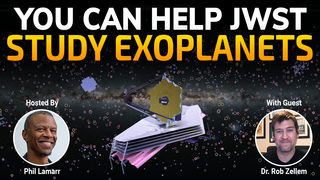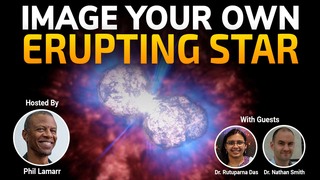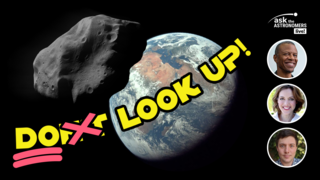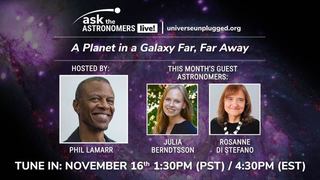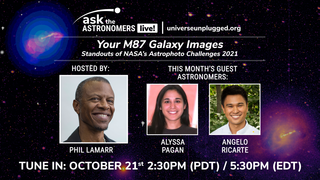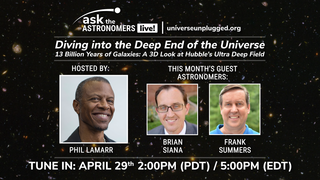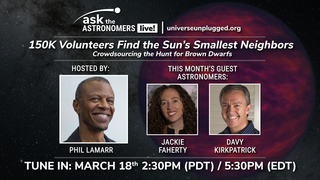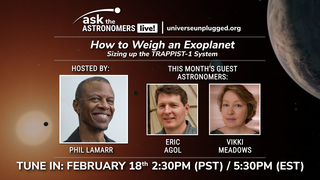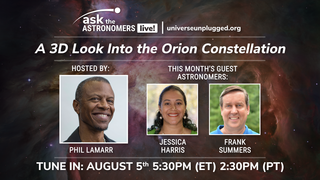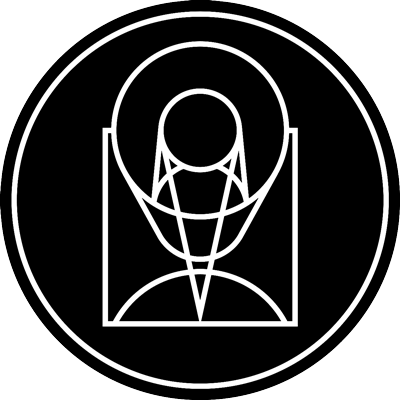Feedback for Diving into the Deep End of the Universe
By leaving feedback, you agree to allow NASA's Universe of Learning to publish the content and information you provide in your submission form. We will only use this information to recognize your entry on our series and social media, and we will never publish your email.
Diving into the Deep End of the Universe
Live Chat
•
April 29th, 2021
When the Hubble Space Telescope imaged a seemingly empty region of sky for over 11 days, it turned out to not be empty at all, but full of the faintest and farthest galaxies in the Universe. This was named the Hubble Ultra Deep Field (HUDF). As astronomers have measured the distances of these galaxies, a new animation shows the 3D aspect of this image. Join us as we dive into the deep end of the Universe in this month's Ask the Astronomers Live to learn about this new animation and what it can tell us about the 13 billion year history of our Universe.
Biographies of Show Participants
PHIL LAMARR (Host)
A Los Angeles native, Phil is an alumnus of Yale University and The Groundlings Theater and perhaps is best known as one of the original cast members of MAD TV, as “Hermes” on FUTURAMA, as "Marvin" in PULP FICTION, “Green Lantern” on JUSTICE LEAGUE and as the voice of SAMURAI JACK. For over 30 years Phil has thrilled audiences with his work on camera and behind the microphone on TV shows such as STATIC SHOCK, FAMILY GUY, STAR WARS: THE CLONE WARS, the CW’s THE FLASH & SUPERGIRL, GET SHORTY, LUCIFER and VEEP; feature films like MADAGASCAR 2, INCREDIBLES 2, and THE LION KING (2019) and video games including FORTNITE, SHADOW OF MORDOR, and the INJUSTICE, METAL GEAR SOLID, and the MORTAL KOMBAT series.
BRIAN SIANA (Astronomer)
Brian Siana received a B.S. in Applied and Engineering Physics from Cornell University (1999), a PhD in Physics from the University of California, San Diego (2005), and spent six years as a postdoctoral scholar at Caltech. He is now an Associate Professor of Physics and Astronomy at the University of California, Riverside, where he uses the Hubble and Keck telescopes to study the formation of galaxies in the early universe and their effects on the surrounding intergalactic medium. He is also the Associate Director of Academic Sustainability at UCR, where he helps coordinate sustainability curriculum and research.
FRANK SUMMERS (Astronomer)
Dr. Frank Summers is an outreach astrophysicist who illuminates and elucidates the awesome beauty and intricate wonders of our universe. His expertise spans a diverse range from research cosmology and high-performance computing to scientific visualization, education, and public engagement. For almost two decades, he has contributed to all aspects of the Hubble and James Webb Space Telescope press, education, and outreach through news media, web sites, educational programs, social media, museums and planetariums.
